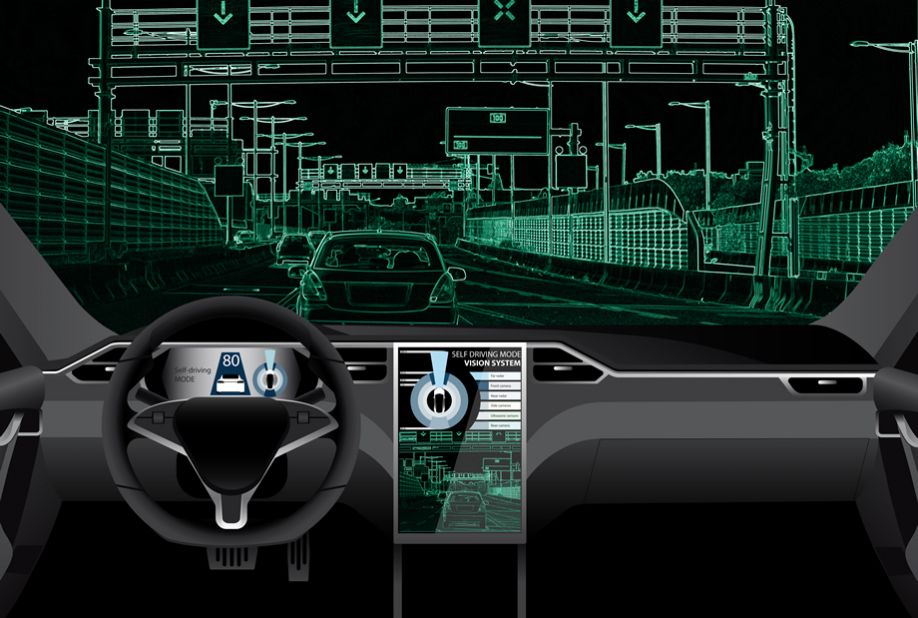What is the Role of Vision Systems in Autonomous Mobility?
This blog covers key camera types like surround-view, forward-facing, and driver monitoring cameras, highlighting features like HDR, LED Flicker Mitigation, and multi-camera sync for safe, reliable operation.
How AI and Optical Components Are Joining Forces to Tackle Driving Offences in the UK
In this blog, we explore the fascinating world of the highways industry, where state-of-the-art cameras and their accompanying optics are highly valuable for evaluating our routes and maintaining seamless operations.
Autonomous Movers Set for US Launch in 2024
Benteler EV Systems, Beep Inc. and Mobileye on Feb. 14, 2022, announced a strategic collaboration to develop and deploy automotive-grade, fully electric and autonomous movers across public and private communities in North America.
Innovative AI Targets the Problem of Drivable Path Detection in Winter Weather
Winter weather is an issue for self-driving cars for many of the same reasons it is for humans. While cars don't have eyes, driverless technologies rely on sensors that need a clear view of their surroundings.
Robots Continue to Drive Innovation in Modern Transportation
Modern transportation wouldn't be the same without robots, and the future will only serve to solidify this. Here's how robots are pushing the transportation industry forward and where they could go from here.
Kodiak Robotics Releases Safety Report on Self-Driving Trucking
Self-driving vehicles have spent their fair share of time in the spotlight recently. Most conversations about the technology revolve around cars and public transportation, but that's not its only application. Driverless trucks are showing promise.
The Gradual Introduction of Driverless Cars
2020 could be the year. Therefore, here with Lookers, retailers of the Ford Kuga Titanium, we take a look at autonomous vehicles and the huge debates around their introduction.
In Chinese First, Autonomous Vehicle Services Residential Compound
In "Boston Ivy", two Hachi Auto vehicles shuttle between the community's bus stop and its food court, passing its underground parking, main garden, as well as its activity, marketing, and children's centers along their route.
How Self-driving Vehicles Contribute to a Culture of Safety
Companies recognize that maintaining a safe work environment is just as important as increasing productivity. Its maximizing the safety and efficiency of a facility that matters most, and SDVs are a tool both manufacturers and warehouses can use to makes this possible
Google to build a futuristic neighborhood in Toronto
Matt McFarland for CNN Money: Google, a company that's built everything from a search engine to a self-driving car, will now try its hand at a city neighborhood.
Interview with Shaoshan Liu and Zhe Zhang of PerceptIn
Using our technology, we are able to reduce the cost of the whole vehicle (including the chassis, the computing hardware, and the sensing hardware, and the software stack) under $10,000 USD.
Torc Robotics unveils self-driving car project
Built on 10 years of commercial experience, recent trip logs 1,000+ miles autonomously
Torc Robotics unveils self-driving system for consumer cars
Darrell Etherington for TechCrunch: Now Torc is setting its sights on the consumer car market, with a self-driving car project based on its decade of experience
Honda to focus on self-driving cars, robotics, EVs through 2030
Naomi Tajitsu for Reuters: Unveiling its mid-term Vision 2030 strategy plan, Honda said it would boost coordination between R&D, procurement and manufacturing to tame development costs.
How a College Kid Made His Honda Civic Self-Driving for $700
Tom Simonite for MIT Technology Review: Brevan Jorgenson’s grandma kept her cool when he took her for a nighttime spin in the Honda Civic he’s modified to drive itself on the highway. A homemade device in place of the rear-view mirror can control the brakes, accelerator, and steering, and it uses a camera to identify road markings and other cars.
“She wasn’t really flabbergasted—I think because she’s seen so much from technology by now,” says Jorgenson, a senior at the University of Nebraska, Omaha. Others are more wary of the system, which he built using plans and software downloaded from the Internet, plus about $700 in parts. Jorgenson says the fact that he closely supervises his homebrew autopilot hasn’t convinced his girlfriend to trust the gadget’s driving. “She’s worried it’s going to crash the car,” he says. Cont'd...
Records 1 to 15 of 26
Featured Product

ResinDek® TRIGARD® ESD ULTRA FOR HIGH-TRAFFIC ROBOTIC APPLICATIONS
To maximize the productivity of an autonomous mobile robot (AMR) or automatic guided vehicle (AGV) deployment, it's critical to create the optimal environment that allows the vehicles to perform at their peak. For that reason, Cornerstone Specialty Wood Products, LLC® (www.resindek.com) created the TriGard® ESD Ultra finish for its ResinDek® engineered flooring panels. The TriGard ESD Ultra finish is ideal for high-traffic robotic applications characterized by highly repetitive movement patterns and defined travel paths.




.jpg)
.jpg)








